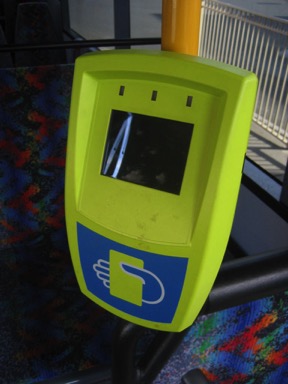
Road Network Operations
& Intelligent Transport Systems
A guide for practitioners!

Road Network Operations
& Intelligent Transport Systems
A guide for practitioners!
Electronic payment systems facilitate payment on public transport and enable integrated transport strategies allowing travellers to use a common method of payment for all public transport modes on all operator’s routes (See eCommerce).
Valid Methods of Payment (MOP) are based on technologies which are regarded as secure and trusted – and meet minimum technical standards that enable them to be read by a variety of readers. They include:
Electronic forms of passenger fare payment are widely in both developed and developing economies. Removing cash payments at the point of use or boarding of the transport service can have several benefits.
For travellers, the benefits include, convenience and access to new services:
For transport service providers, the benefits may be:
The success of a passenger fare payment system can be judged by its usage and the proportion of travellers using it.
The widespread deployment of a non-cash method of payment for passenger fare payment – and the interoperability of the method of payment across modes – is essential to supporting the development of efficient public transport networks in cities worldwide (See Standardisation & Interoperability). Cities that operate integrated transport networks with common methods of payment include Auckland (New Zealand), Cape Town (South Africa), Hong Kong (China), London (UK), São Paulo (Brazil), Stockholm (Sweden), Washington (US) (See Integrated Multi-use/Intermodal Ticketing).
Proximity cards, smart cards and more recently mobile phones – as Methods of Payment, (See Methods of Payment) are portable payment transactions that are secure. They can be used to access a wide range of public transport services simply by touching or waving the method of payment near a reader located:
In most cases the reader displays the amount debited – and, if the method of payment is linked to a prepaid account, the updated balance can also be displayed.
Travellers can use their mobile phones to access information services, to obtain advice on the best fare for a trip, the best time to travel – and availability of seats. By combining traveller information services with the location of the mobile phone user, it is possible to offer advice on a combination of modes that meets the user’s requirements for journey cost or duration.
Advances in location-based services are being driven by 3rd party service providers, enabled by the mobile phone’s ability to estimate a user’s location outside of, or deep within, buildings. These developments include Cell ID, WiFi network mapping against stored databases, GNSS and Bluetooth-based beacon technologies. The ability to deliver information to a user’s mobile phone at known locations enables more relevant and timely travel services. These positioning technologies also enable a bus-ticketing machine to calculate the fare automatically, based on the vehicle’s position on the route or its distance travelled. Other innovations associated with advanced fare payment on express / long-distance coach services include real-time calculation of ticket prices for seat reservations to enable effective yield-management and capacity-management.

The critical success factors for an electronic payment system include the widespread:
Ideally, the payment top-up options should be responsive to the different needs of occasional and frequent users. For example, the London Oyster card scheme, caters for both – infrequent users can top-up their accounts at numerous locations across the city, whilst frequent users can also benefit from on-line facilities.
One means of achieving integrated transport is to require all transport operators participating in a scheme to use common technical standards and operational specifications and codes of practice (See Standardisation & Interoperability).Travellers are then able to use the same card for all transport modes and for other services (See Value Added Services).
Since cards do not have to be registered to a person, it is possible for the method of payment to be transferred between friends, family and relatives. This may be a deterrent to implementing discount schemes for frequent travellers unless a registration scheme is in place.
Trials and pilots of new methods of payment (for example, the pilot in Hong Kong of NFC-equipped mobile phones that behaves like an Octopus card) demonstrate that a transport service provider should provide a variety of MOPs to ensure that the majority of users’ preferences are satisfied.
The most common service upgrade is to:
The evolution of large scale electronic payments systems may also require the introduction of new payment service providers such as credit card companies or Mobile Network Operators (MNOs) that wish to charge their account holders for public transport use by using their credit cards or mobile phones as the MOP. Transport for London (UK) is piloting the use of 3rd party wireless credit cards as a MOP to pay for public transport.